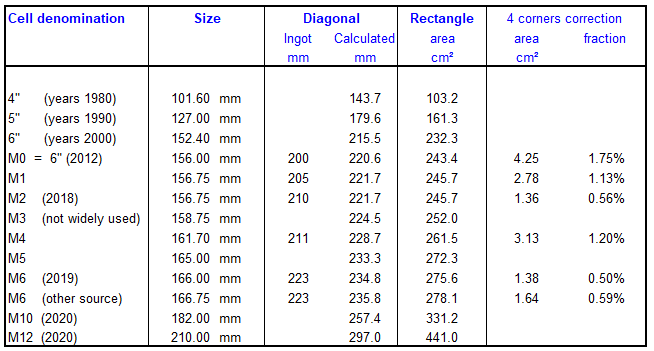|
<< Click to Display Table of Contents >> Cells normalized sizes |
  
|
|
<< Click to Display Table of Contents >> Cells normalized sizes |
  
|
In the crystalline modules, the size of the cells continuously evolves from year to year.
This is due to the increase of the ingots standard diameters.Historically cells of 4", 5" and 6" (15.24 mm) were used.
Since 2012, the cell sizes have continuously evolved, and taken new denominations. The usual sizes passed progressively from 156, 166, 182, and up to 210 mm.
The biggest cells can only be used as half or thirds of cells. The total size of each individual cell is mainly limited by the currents and the module sizes. Due to the cell size and increasing efficiencies, the usual currents of modules have passed from less than 10 A to 15-16A during the last decade. This has consequences on the specifications of the string design, inverters and possible optimizers.
The next table summarize the evolution of the standards, and the cell's main properties.Some few values are not quite reliable as the information may vary according to different sources.

NB: The monocrystalline cells are cut in cylindrical ingots, and therefore present cutted corners. The full cells have 4 cutted corners, when the half cells have only 2. The table gives an estimation of the corner correction on the cell area.